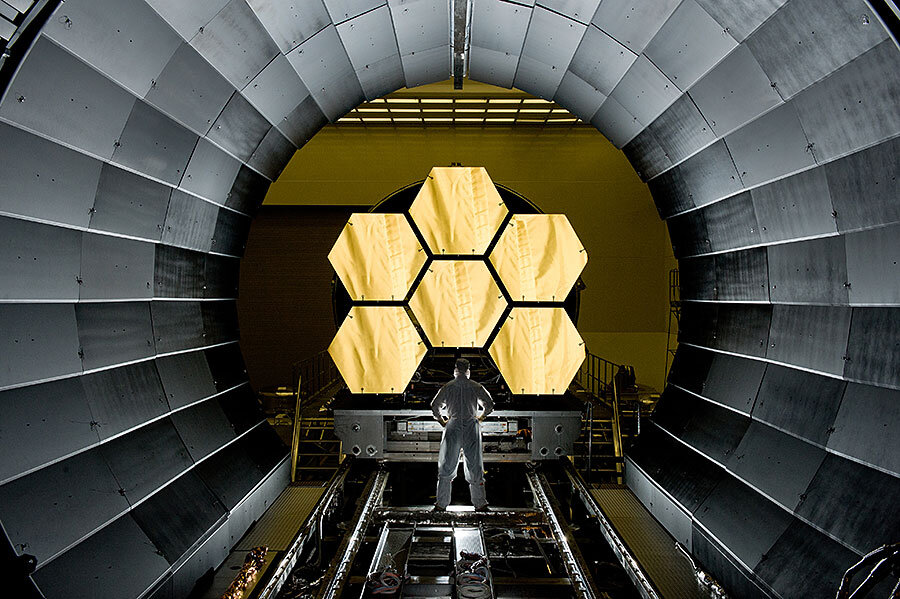Autonomous space robots could assemble large telescopes, habitats
Loading...
| Washington
Peering deeper and deeper into space will require telescopes with huge mirrors, but building, testing, and transporting those super-scopes will be a daunting challenge, a conference of future space leaders was told Thursday.
Alberto Conti, a Northrop Grumman manager, said the James Webb Space Telescope, currently undergoing tests, has a mirror that’s about 21 feet in diameter. Even at that size, Conti said it is difficult to find a facility large enough to test the mirror and a spacecraft that can transport it into orbit.
His solution, echoed by Jay Falker of NASA, is to use robots to begin building and testing the telescopes – in space, where there’s plenty of elbow room.
Robots in space were just one of the “wicked cool technologies” introduced at the Future Space Leaders conference on Capitol Hill last week. Most of the futuristic technology, while feasible, has yet to be developed.
Falker, a NASA technology mission director, said it would be easier to just build these large objects in space, rather than on Earth where they need to be carefully folded up and shipped into orbit.
He said “robot swarms” – groups of small robots – could be used not only to build telescopes, but to construct housing on the moon where colonies of astronauts could live and work.
Such structures could be built far beyond the moon. For example, Falker said autonomous robots working like swarms of ants, communicating with one another along with NASA’s home base, could pour cement and build structures on Mars using local Martian soil.
Conti, an astrophysicist, said Northrop Grumman plans on working with NASA to test robotic arms for use as builders on the space station. They could build mirrors, as well as tresses and covers for telescopes, and even conduct experiments, he said.
Conti said if robot swarms can be programmed to be autonomous or “self-conscious,” they could refuel satellites and spacecraft and even investigate these planets before humans explore.
When asked by moderator Carissa Christensen, of the Virginia-based Tauri Group, what the most important piece of future space technology might be, Conti answered robotics, since “robotics software will change lives.”





